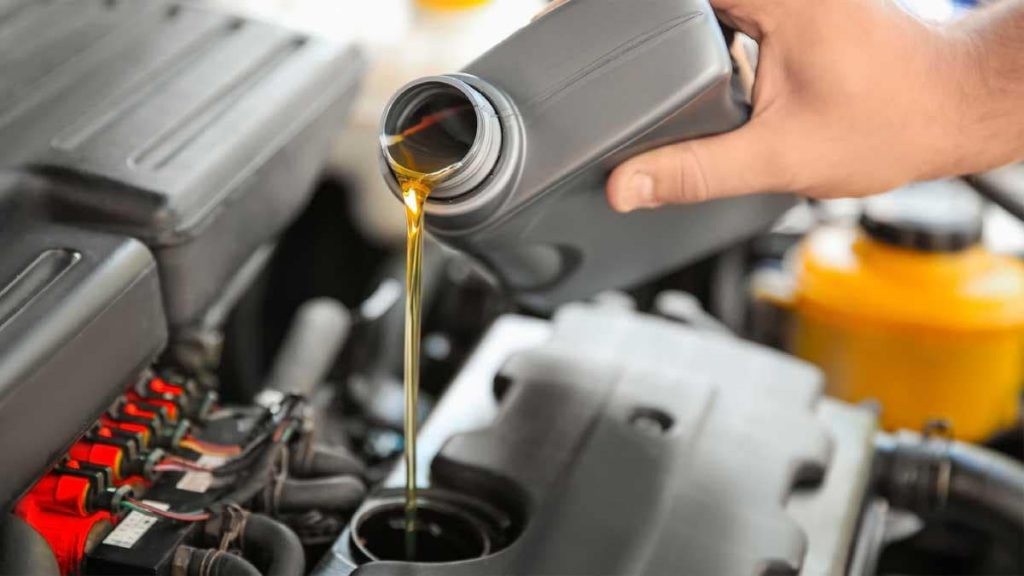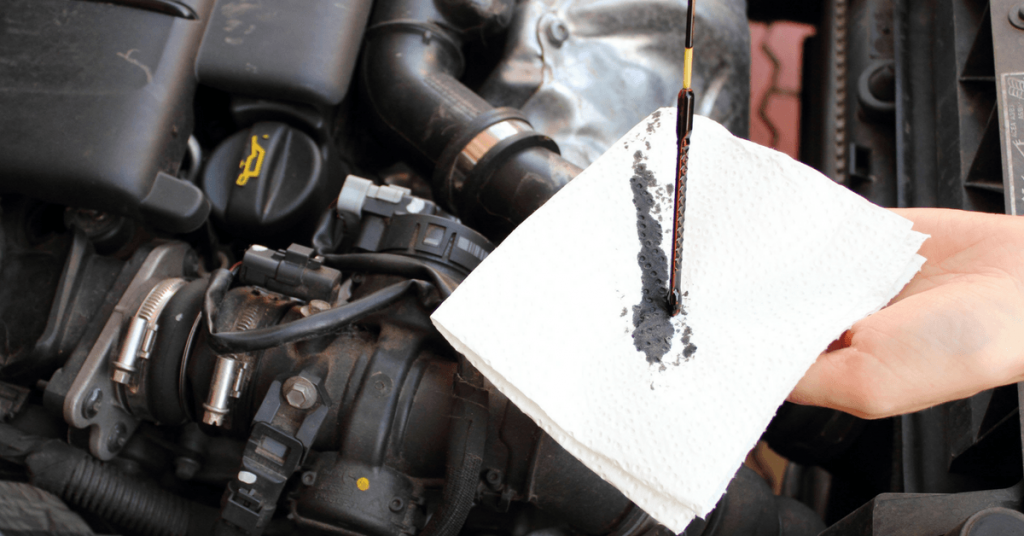Top 7 Signs You Need An Oil Change
Many folks might know that the role of your motor oil is to lubricate engine parts and prevent engine overheating, but still neglect routine oil changes. Skipping regular oil changes might not sound serious, but it will render the engine less effective, hurting performance, power output, and mileage as well as the longevity of your delicate engine.
Do note that relying on mileage alone to schedule an oil change is not sufficient, as the oil can get contaminated long before those marks and cause permanent engine damage. Learn the signs you need an oil change so that you know in time when to change oil to ensure optimum engine performance and lifespan.
Why You Need To Change Oil Routinely
The role of engine oil
One big rule of thumb is anything that creates friction in your vehicle’s engine or anything mechanical will hurt engine performance and fuel efficiency. This is where engine oil comes into play. Engine oil helps absorb heat from the engine and lubricates moving metal parts that would otherwise grind together, thus ensuring proper operation and further preventing engine overheating.

This is why it is important to change all of your truck’s fluids on schedule to ensure it is always in tip-top shape. Lubricating your engine parts with good motor oil and changing the oil regularly means optimum engine performance, power output, and mileage. Regular oil changes reduce engine wear and result in a longer-lasting car engine. It can even keep your high-mileage car running for longer. In addition, quality and clean oil allow the engine to run cleaner, therefore it will reduce tailpipe emissions.
How oil gets dirty
Over time, all types of motor oil, even the highest quality ones, get contaminated with dirt and carbon, which can cause excessive wear on the engine. Surely, there’s the oil filter that catches the deposits that build up over time to keep the oil clean and smooth. However, as the oil gets older, the amount of deposits in the oil can be excessive and the filter might not be able to extract everything.
Recommended oil change interval
You can check the recommended oil change interval for your car in the owner’s manual. The recommended interval for oil change is about every 3,000 to 5,000 miles, plus before winter, or whenever your manufacturer recommends. Also, remember to check the engine’s oil level once every two weeks and before any long road trips.
However, as noted above, relying on these fixed mile intervals alone is not reliable, and you need to look out for various signs that you need an oil change.
Switching from traditional oil to synthetic oil
While the traditional, cheaper non-synthetic oil needs to be changed every 3,000 miles to 5,000 miles, synthetic oils can last between 5,000 and 10,000 miles between oil changes. They create better lubrication between moving parts, thus better-preventing engine overheating. They also perform better and don’t deteriorate in high-heat, high-stress situations.
Synthetic oils also offer much better performance in cold weather while non-synthetic oil would get too thick to do its job properly, as well as providing excellent protection in extreme temperatures. Certain brands of synthetic oil are specifically engineered to be more robust in terms of protection against deposits, pumpability in extreme cold, and stability in extreme heat.
All in all, they are better food for your engine and will help keep your engine healthier and more efficient for longer. The only major downside of synthetic oil is it is significantly more pricey, generally twice as much as equivalent-viscosity conventional oil.
Prevent oil from getting thicker
Engine oil gets thicker in the winter, thus making the pump work extra hard, will not circulate efficiently and thus directly hunting your engine performance and mileage.
One solution is to change to a lighter oil altogether if you live in consistently cold climates, or when you’re winterizing your vehicle before the winter hits. It’s recommended that you switch to a 0W30 or 0W40 oil to expedite oil flow in sub-freezing conditions.
Switching from a thick 20W50 to a thinner 5W30 will make a noticeable difference in responsiveness. For most light truck use, 10W30 should be a good compromise, but consult your owner’s manual for factory recommendations. Even if you can’t use lighter oil, regular oil changes will keep your oil from getting excessively thicker over time.
Also, remember that you will more likely need thicker oil if you’re hauling or towing a mobile home behind. That said, reach for your owner’s manual and always follow your manufacturer’s recommendations. Because unless you do frequent towing or hauling, the thicker-viscosity oils might not be necessary for your vehicle.
Read more
- How To Check Engine Oil
- Engine Oil Color: Determine If It Needs To Be Changed
- Is Engine Oil The Same As Transmission Oil?
The consequences of overdue oil change
It depends on how long you have delayed the change. All the vehicles come with a manufacturer-provided number that indicates how many miles you can expect your oil to last. However, it often refers to the lowest miles that you can safely drive without changing the oil.
So, there’s nothing to worry about if you go slightly longer than the recommended miles. However, if you are long overdue, that old oil can cause serious and permanent damage to various engine parts and cause you expensive repairs and replacements.
Skipping regular oil changes will make your engine work less efficiently and can lead to engine overheating since the oil can no longer lubricate parts properly to prevent heating. Therefore, you will encounter one or more abnormalities, including deteriorating performance and fuel efficiency, increased emissions, and starting problems.
7 Signs You Need An Oil Change
Dark and dirty oil
Fresh oil keeps the engine healthy by lubricating all the parts and helping them move smoothly. However, the older it gets, the more its molecules break down and create problems for the vehicle.
How to tell if engine oil is bad? The color and smell of the oil can be signs that you need an oil change. Fresh oil looks amber in color. However, it turns black and greasy after collecting dirt and particles from the engine parts. It’s better to check the oil every month to see if it has changed color. You should be familiar with the original color of the oil you use, and better yet its smell as well, to make DIY car maintenance easier in the long run.

Take the dipstick away, wipe it with a piece of cloth, and insert it again into the cylinder. Pull it out and check the oil’s color. Rub it into a white paper towel to be sure. If the colour is dark red or very dark it appears almost like black, then the oil is old enough. If you’re still not too sure, another one of the telltale signs you need an oil change is if the oil smells burnt when you whiff that dipstick.
An important note though, since a common confusion is how dark is considered “dark”. All engine oil becomes darker as it runs through engines, and in some cases the oil can get noticeably darker in little time or almost immediately, so relying on color alone isn’t always a reliable sign you need an oil change.
A helpful tip is to check the consistency as well whenever you inspect your oil level. Over time, oil can pick up grime and dirt, and all these small particles will make the liquid less smooth and more gritty. If your oil has a lot of grit in it, it is a sure sign you need an oil change.
*Note: Sometimes, you can notice the engine oil color as somewhat milky or creamy. Well, it indicates that the oil contains water. It can be the engine’s coolant that is getting into the oil because of the leaky head gasket. It also happens when you travel short distances, and the engine cannot produce enough heat to burn that water. Instead, it creates water vapors, that get mixed into the oil.
So, a creamy engine oil color does not necessarily need a replacement if it is because of the short trips. You just need to drive the engine enough so those water vapors can get evaporated.
Loud engine noise
Fresh oil creates a thin shield between engine parts to save them from friction and keep the motor quiet during driving. So, any strange noise coming from under the hood is sign you need an oil change, and you should schedule a car oil change with a mechanic as soon as possible.
However, the heat and other engine conditions break down lubricant, which in turn causes the engine parts to create a knocking or clanking sound when the car is in motion.
You might also hear a ticking noise while your engine warms up. This happens because as soon as you start your vehicle, the oil is immediately circulated to lubricate the engine. If the motor oil is old and no longer smooth but gritty with contaminants, the oil won’t do its job properly and won’t move as freely within the system. This ticking noise comes from the valves having to work extra hard just to circulate the oil effectively.
Shaking while idling
Without proper lubrication, your engine will not run as smoothly, so the high level of friction present in your engine can cause abnormal vibrations or shaking motions during idle. If you notice this problem, it’s best to avoid idling as much as possible until you can have your oil changed.
Exhaust smoke
Sometimes, thin white vapor comes out of the exhaust pipe in cold weather, which is normal and would go away when your engine warms up so it’s not a source of concern. However, if it’s definitely smoke, check the oil level and its color and texture. You shouldn’t see anything exiting your tailpipe, and when you do, it’s a sure sign that something is wrong, including oid, contaminated motor oil.
That said, if you see thick white smoke from your exhaust, the reason might be an oil leak or faulty engine parts like cracked head gaskets, which would mean very expensive, time-consuming and troublesome inspection and replacement, so you should take your vehicle to a repair shop to have it looked at.
Smell of oil inside the vehicle
It should never happen. If it does, it could mean overheating of the engine or an oil leak. As it can lead to a serious problem, take your car immediately to a service center and opt for an oil change.
Poorer fuel economy than usual
As above, quality, contaminant-free engine oil allows for the engine to work at optimal efficiency, and the direct result of this is better mileage. Therefore, one of the self-explanatory signs you need an oil change is decreasing fuel economy. If after a long trip, you notice that your car is suddenly consuming significantly more fuel than usual, you should expect to get your oil change the sooner the better.
Watch more:
Illuminating oil change light or check engine light
Another sign you need an oil change is the oil change light turning on. The dashboard has an oil change light that turns on when the level of oil is too low in the system. Once you see the light, use the dipstick to check the level, and change it if it’s insufficient.
Note that if your car doesn’t have an oil change light or if your oil problem is very serious, the Check Engine light might light up on your dashboard. Of course, various mechanical problems can trigger this, so if this light illuminates, it’s best to have a mechanic perform an inspection to determine whether old oil is the only culprit, or if something else triggered this light.
The general rule of thumb is to have the car oil changed every 3,000 miles or three months, whichever comes first. However, you can extend it to 6,000 miles or six months if your vehicle is brand new. Remember that changing your motor oil is a simple but the most useful service that you can provide for your automobile. Doing it regularly will keep your auto in good condition and extend its life.














